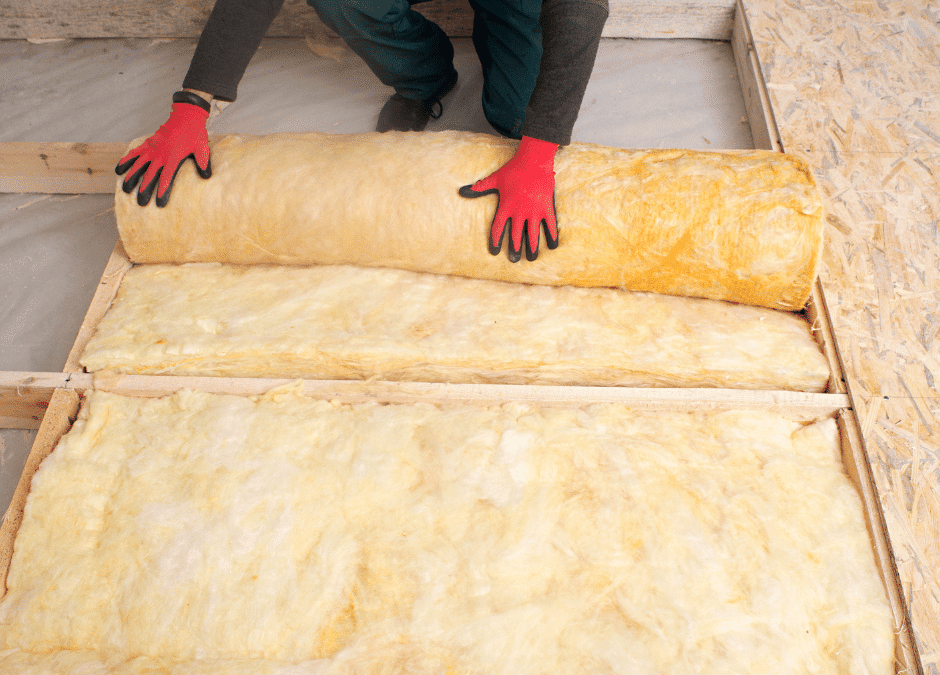Are you feeling the chill even with the heat cranked up, or sweating through summer despite a whirring AC? It might not be your HVAC system at fault, but something hidden in your walls—your insulation. In this blog post, we’ll unwrap the mysteries of insulation lifespan and how knowing when to replace it can transform your living space into a snug haven while keeping those utility bills in check. Rapid Insulation of Atlanta is here to guide you through recognizing the signs of worn-out insulation and the steps to take towards a comfier, more cost-effective home.
The Lifespan of Different Insulation Materials
Choosing the right insulation material is crucial for your home’s long-term comfort and energy efficiency. Each type has an expected lifespan, which impacts how soon you’ll need to consider replacement.
- Fiberglass Insulation: Typically lasts 20-30 years. Fiberglass is common due to its cost-effectiveness and decent lifespan, but it can sag and lose efficiency over time.
- Cellulose Insulation: Has a lifespan of approximately 25 years. Cellulose is favored for its eco-friendly properties, though it can settle and compress, reducing its effectiveness.
- Spray Foam Insulation: Can last over 50 years. Its longevity comes from its ability to resist moisture and not settle, maintaining its insulating properties longer than other types.
- Mineral Wool Insulation: Often lasts 30-40 years. Mineral wool is durable and fire-resistant, providing a stable option that holds up well over time.
- Polystyrene Insulation: Expected to last up to 50 years. This rigid foam insulation is excellent for exterior walls and basements, offering long-lasting thermal resistance.
Understanding the lifespan of your insulation helps you plan future home maintenance and energy efficiency upgrades. It’s a crucial step in ensuring your home remains comfortable and energy-efficient year after year.
Factors Affecting Insulation Durability
Insulation isn’t just about materials; it’s about survival. Environmental rogues, from moisture invaders to pesky pests, can shorten their heroic lifespan. Moisture is the arch-nemesis of insulation, leading to mold, mildew, and a decrease in efficiency. Rodents and insects see your insulation as prime real estate, causing damage that can go unnoticed for years. And let’s not forget about the natural settling of your house, which can compress insulation over time. In this section, we’ll uncover the villains that can make your insulation less effective over time and what you can do to protect it.
Signs Your Insulation Needs a Replacement
Is your insulation sending out an SOS? Maybe your energy bills are sky-high, or your home’s temperature is more unpredictable than a reality TV show. If your house feels drafty in the winter or sauna-like in the summer, it’s a clear sign your insulation might be underperforming. Also, if you notice that your insulation is visibly damaged or wet, it’s time for it to go. We’ll highlight the distress signals your insulation might be sending, guiding you on when to take action. Remember, being proactive can save you a bundle and keep your home comfortable year-round.
The Impact of Outdated Insulation on Energy Bills and Comfort
Old insulation isn’t just a nuisance; it’s a wallet-drainer and a comfort-stealer. Inadequate insulation forces your HVAC system to work overtime, leading to higher energy bills. It’s like trying to keep a leaky bucket full; you’ll keep pouring in more water (or, in this case, heating and cooling), but it’ll never be enough. Let’s connect the dots between aging insulation, climbing energy costs, and the quest for home comfort, showing why keeping your insulation up-to-date is crucial. After all, your home should be your sanctuary, not a place where you battle the elements.
Inspection and Assessment: When to Call the Pros
Sometimes, you need a hero, and that’s when Rapid Insulation of Atlanta steps in. You might be a keen DIYer, inspecting your attic on a quiet Sunday. However, recognizing the subtle signs of insulation failure requires a trained eye. Whether you’re spotting uneven temperatures, suspecting hidden damage, or just due for a check-up, calling in the pros can give you peace of mind. We recommend shining the spotlight on your insulation annually, ensuring it’s still in prime condition to defend your home against the weather’s whims.
The Replacement Process: What to Expect
Fear not the replacement process! It’s less of a saga and more of a mini-series. First, our team assesses your current insulation, identifying what needs to go and what can stay. Then, we remove the old guard, ensuring that your home is ready for its new armor. Finally, we install the new insulation, transforming your home into a fortress of comfort and efficiency. We’ll walk you through each step, setting your expectations for a smooth transition to more efficient, effective home insulation. And before you know it, your home will be snug and secure, saving you money.
Contact Us for Your Insulation Needs
Maintaining the right temperature in your home shouldn’t be a constant battle against the elements. Rapid Insulation of Atlanta understands this all too well. That’s why we’re dedicated to providing solutions that not only ensure a comfortable living environment but also contribute to significant savings on energy bills. If your home feels drafty or if your energy costs are mysteriously high, it’s time to reach out. Let us help you make your home the comfortable, efficient space it deserves, starting with the right insulation.
If you’re in the Atlanta area and need expert assistance with your insulation, don’t hesitate to reach out to Rapid Insulation Company of Atlanta. We’re here to ensure your home stays cozy and energy-efficient all year round.


